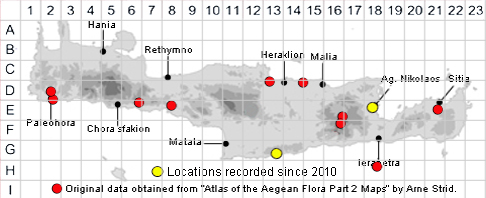
SPECIES DESCRIPTION
CUSCUTA PLANIFLORA
Family:- CONVOLVULACEAE
Common Names:- None
Synonyms:- None
Meaning:- Cuscuta (L) A name used by the botanist Rufinus for dodder, from
Arabic keckout.
Planiflora (L) Flat flowered.
General description:- Scrambling and entwining parasitic plant.
Stems:-
1) Slender, yellowish, thread-like, much branched.
Leaves:-
1) Reduced to tiny scales, without chlorophyll.
Flowers:-
1) 1·5-2·5 mm, 5-merous; glomerules 5-6 mm in diam, small, compact, globose.
2) Calyx white, rarely pink, as long as the corolla-tube, deeply divided.
a) lobes longer than the tube, distinctly turgid (swollen, nearly semicircular in
cross-section), oblong or more rarely ovate.
3) Corolla white.
a) lobes patent, acute, about as long as the campanulate tube, often cucullate at
the apex.
4) Stamens, exserted.
5) Scales, oblong, usually reaching the stamens, shortly fimbriate.
6) Styles (including stigmas) about as long as the ovary.
Fruit:-
1) Capsules, depressed-spherical, which are surrounded by the remains of the
crown.
2) Seeds, smaller than 1mm.
Key features:-
1) Plant not blackening when dry.
2) Flowers white or purplish.
3) Calyx-lobes oblong (rarely ovate), longer than the tube, swollen, nearly
semicircular in cross-section.
Habitat:- Parasitic on various herbs and grasses, sometimes on dwarf shrubs,
(Cistus, Sarcopterium). 0-1600 m.
Distribution:- Fairly widespread and common across the Mediterranean. Limited
distribution on Crete. Not common.
Flowering time:- Mainly Apr-June.
Photos by:- Steve Lenton
